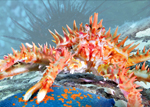|
 PCR
PCR
DNA polymerases and kits for most PCR applications.
Enzymes provide an antibody-mediated hot-start ensuring highly specific and sensitive PCR amplification.
 Duplex-specific nuclease
Duplex-specific nuclease
Selectively cleaves ds DNA and DNA in DNA-RNA hybrid duplexes. Widely used for full-length enriched cDNA normalization and for construction of normalized RNA-seq libraries for next generation sequencing.
 Mint-2
Mint-2
cDNA synthesis kit intended for generation of full-length-enriched ds cDNA from total or poly(A)+ RNA. Synthesized cDNA can be used for construction of cDNA libraries, cDNA normalization and next generation sequencing.
| 


